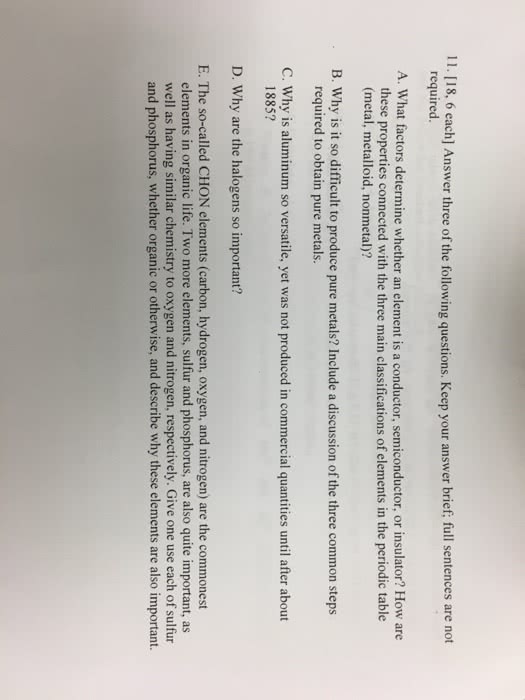For each of the following, fill in the blank with the correct response. All of these fill-in-the-blank problems pertain to material covered in the sections on alkanes, alkenes and alkynes, aromatic hydrocarbons, and hydrocarbon derivatives.
a. The first "organic" compound to be synthesized in the laboratory, rather than being isolated from nature, was _ _ _ _ _, which was prepared from _ _ _ _ _.
b. An organic compound whose carbon-carbon bonds are all single bonds is said to be _ _ _ _ _.
c. The general orientation of the four pairs of electrons around the carbon atoms in alkanes is _ _ _ _ _.
d. Alkanes in which the carbon atoms form a single unbranched chain are said to be _ _ _ _ _ alkanes.
e. Structural isomerism occurs when two molecules have the same number of each type of atom but exhibit a different arrangement of the _ _ _ _ _ between those atoms.
f. The systematic names of all saturated hydrocarbons have the ending _ _ _ _ _ added to a root name that indicates the number of carbon atoms in the molecule.
g. For branched hydrocarbon, the root name for the hydrocarbon comes from the number of carbon atoms in the _ _ _ _ _ continuous chain in the molecule.
h. The positions of substituents along the hydrocarbon framework of a molecule are indicated by the _ _ _ _ _ of the carbon atom to which the substituents are attached.
i. The major use of alkanes has been in _ _ _ _ _ reactions, as a source of heat and light.
j. With very reactive agents, such as the halogen elements, alkanes undergo _ _ _ _ _ reactions, whereby a new atom replaces one or more hydrogen atoms of the alkane.
k. Alkenes and alkynes are characterized by their ability to undergo rapid, complete _ _ _ _ _ reactions, by which other atoms attach themselves to the carbon atoms of the double or triple bond.
l. Unsaturated fats may be converted to saturated fats by the process of _ _ _ _ _.
m. Benzene is the parent member of the group of hydrocarbons called _ _ _ _ _ hydrocarbons.
n. An atom or group of atoms that imparts new and characteristic properties to an organic molecule is called a _ _ _ _ _ group.
o. A _ _ _ _ _ alcohol is one in which there is only one hydrocarbon group attached to the carbon atom holding the hydroxyl group.
p. The simplest alcohol, methanol, prepared industrially by the hydrogenation of _ _ _ _ _.
q. Ethanol is commonly prepared by the _ _ _ _ _ of certain sugars by yeast.
r. Both aldehydes and ketones contain the _ _ _ _ _ group, but they differ in where this group occurs along the hydrocarbon chain.
s. Aldehydes and ketones can be prepared by _ _ _ _ _ of the corresponding alcohol.
t. Organic acids, which contain the _ _ _ _ _ group, are typically weak acids.
u. The typical sweet-smelling compounds called _ _ _ _ _ result from the condensation reaction of organic acid with an _ _ _ _ _.



